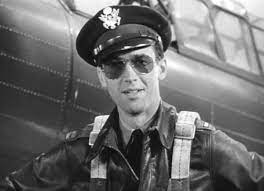 |
| Admiral Graf Spee Maritime Museum of Montevideo |
The Admiral Graf Spee was a German "pocket battleship" of ten thousand tons that was launched with considerable Nazi fanfare in 1936. She was armed with six 11" guns in two triple gun turrets. She was a fast ship capable of cruising at 28 knots. Prior to the German invasion of Poland which commenced on September 1939 the Graf Spee was ordered to deploy to the South Atlantic. With the outbreak of WW2 Captain Hans Langsdorff led her on a spree of destruction in the waters of the South Atlantic. She sank nine merchant vessels accounting for a tonnage greater than 50,000.
 |
| Battle of River Plate Plaque Maritime Museum of Montevideo |
The Royal Navy responded by vectoring in three warships to confront the Graf Spee...the HMS Ajax, HMS Achilles (Royal New Zealand Navy) and HMS Exeter. This intercepting fleet of cruisers was commanded by Commodore Henry Harwood. Each of the three Allied ships was smaller and less formidably armed than the Graf Spee. But Harwood relied upon superior numbers to take on the Graf Spee at the Battle of the River Plate which was fought on December 13, 1939.
 |
| Anchor of HMS Ajax Punta del Este, Uruguay |
The battle was inconclusive. The Graf Spee inflicted damage on the three Allied ships but was also damaged herself. Captain Langsdorff was wounded twice by splinters while standing at the bridge. The Graf Spee was forced to retreat to the Uruguayan capital of Montevideo where Langsdorff requested two weeks time to make repairs to the ship. Uruguay, a neutral nation, only permitted the Graf Spee 72 hours to repair the vessel.
 |
| Adolph Hitler Plaque From Graf Spee Maritime Museum Montevideo |
Langsdorff believed, mistakenly, that more than three Allied ships lay in wait to intercept the Graf Spee if it should leave Montevideo. He decided that a second Battle of the River Plate was not worth the risk. He chose to scuttle his ship on December 17 outside Montevideo harbor. He then proceeded to Buenos Aires where he blew his brains out in a hotel room while lying in the ship's ensign. Many German sailors and officers, stranded in Uruguay, made their way to Argentina for the duration of the war. Artifacts from the wreck of the Graf Spee have been recovered over the years since. Many were sold to collectors. A few can be found at the Maritime Museum of Montevideo...http://www.histarmar.com.ar/Museos/MuseoNavalMontevideo.htm.
 |
| Churchill heartily congratulates sailors of the HMS Ajax who vanquished the Graf Spee |
Winston Churchill, head of the admiralty in December 1939, celebrated the Allied victory over the Graf Spee with gusto. Churchill knew that Harwood and the British had essentially bamboozled Langsdorff into overestimating Allied naval strength in the South 'Atlantic. Had the Graf Spee chosen to challenge the Allied blockade of Montevideo she could, perhaps, have damaged a British cruiser and escaped to wreak more havoc upon Allied merchant shipping.
 |
| Falklands War 1982 |
The legacy of the victory over the Graf Spee lives on. The Royal Navy, the nation's senior service, has had a proud winning tradition from Drake to Nelson. In 1982 the Royal Navy would be tested again when the Argentine Junta invaded the Falklands islands. Thatcher dispatched a Royal Navy fleet 8,000 nautical miles to the South Atlantic to liberate them from Argentine control. The United States remained officially neutral but Reagan helped to provide fuel, ammunition and intelligence in the campaign. The Argentine Cruiser Belgrano was torpedoed and sunk on May 2, 1982 by HMS Conqueror costing 323 lives. The Belgrano has originally been the USS Phoenix -- a Brooklyn class cruiser in the US Navy. She was a veteran of Pearl Harbor and had once served as MacArthur's flagship.
 |
| Sinking of Belgrano |
Tourist Notes: The Maritime Museum of Montevideo is a small but excellent institution which preserves Uruguayan naval history...http://www.histarmar.com.ar/Museos/MuseoNavalMontevideo.htm. They even have a cannon from the HMS Agamemnon that was captained by Horatio Nelson.
 |
| Cannon from HMS Agamemnon Maritime Museum of Montevideo |





























